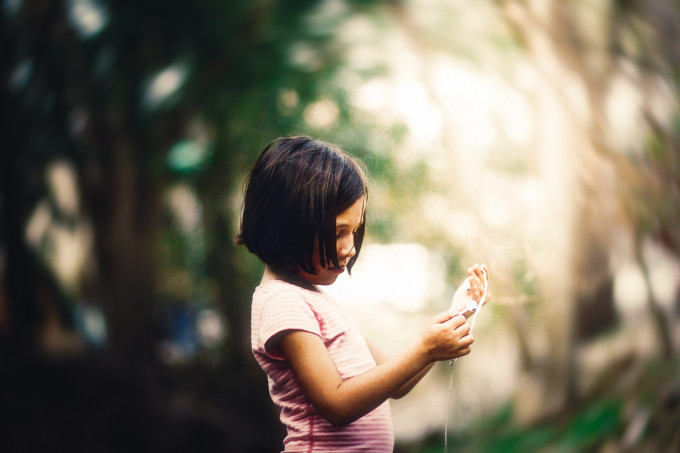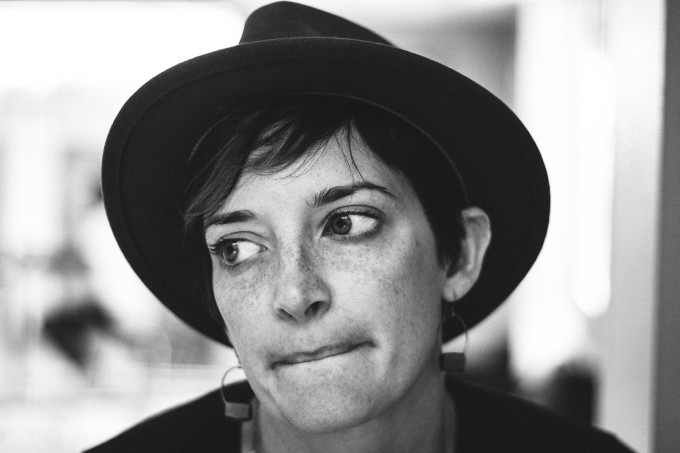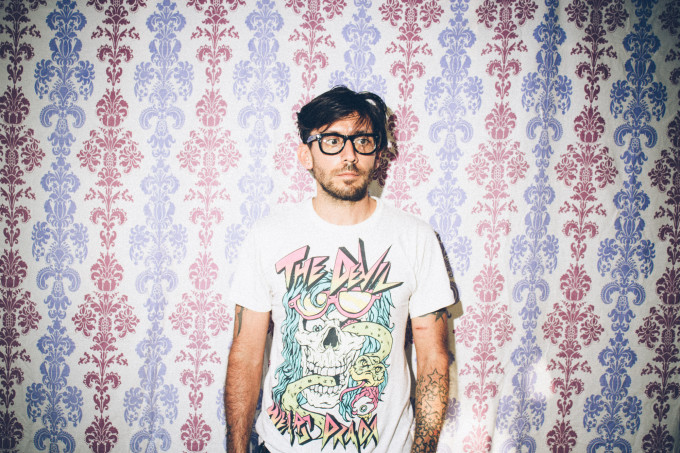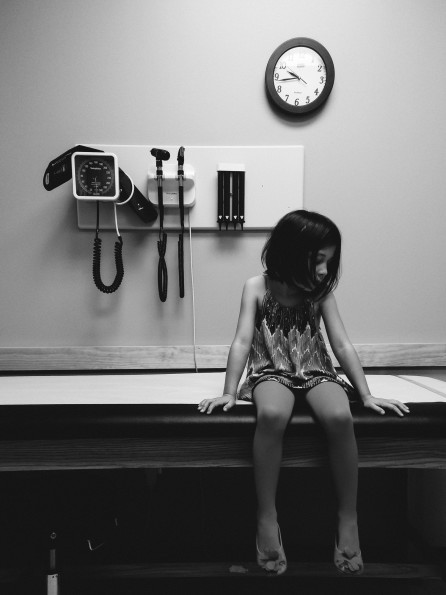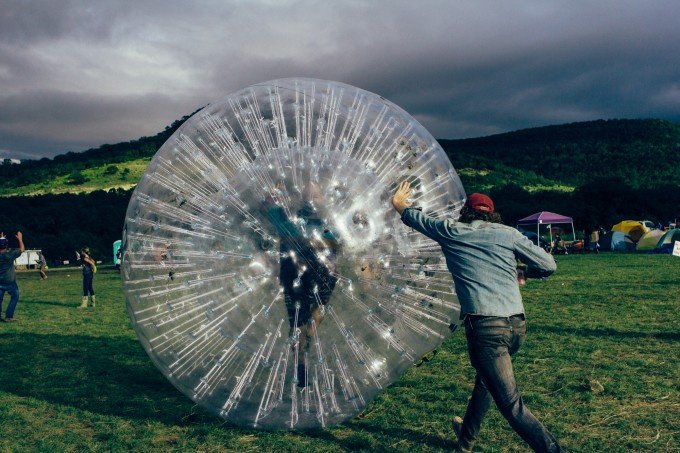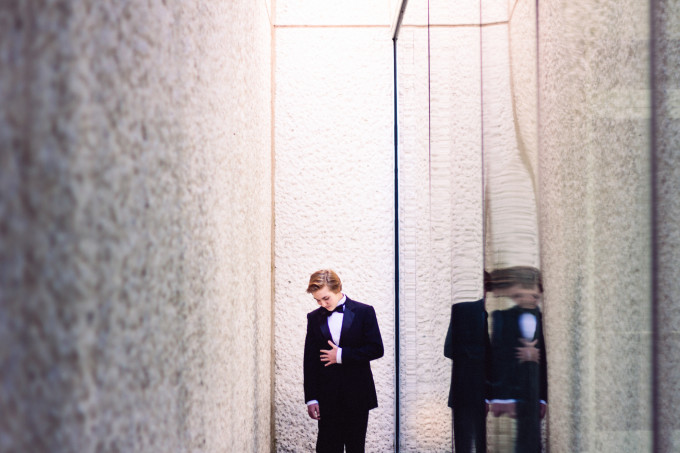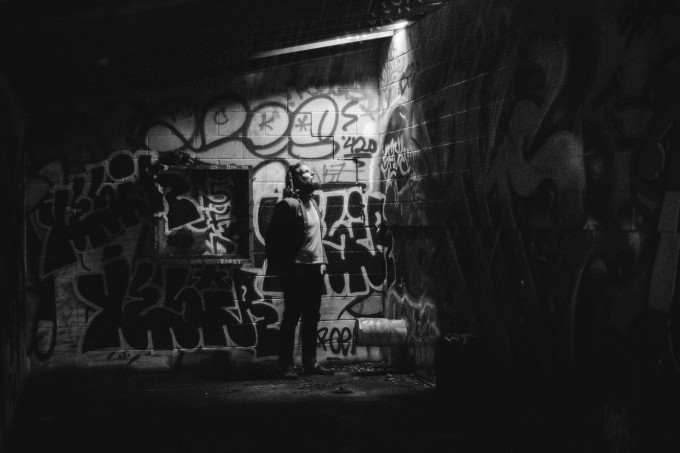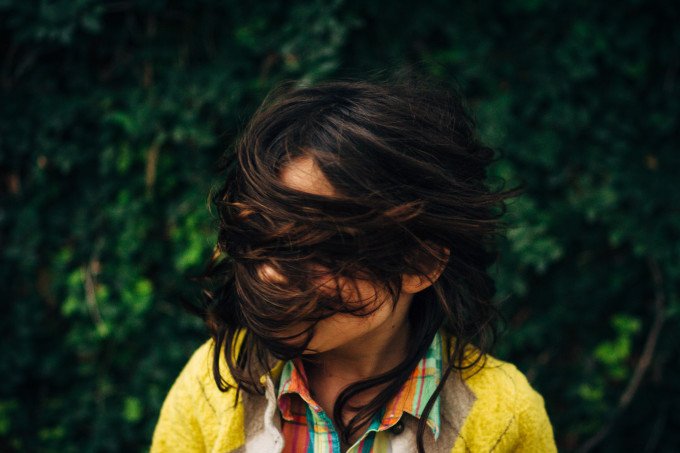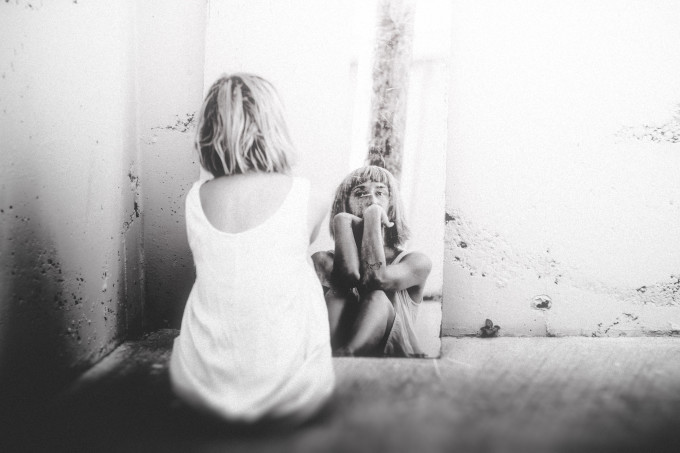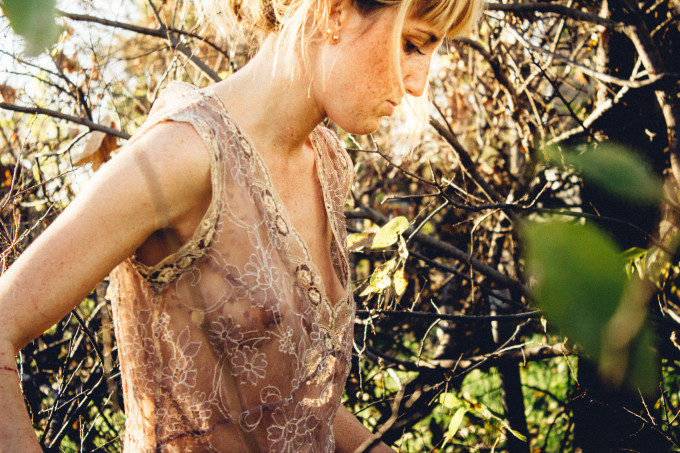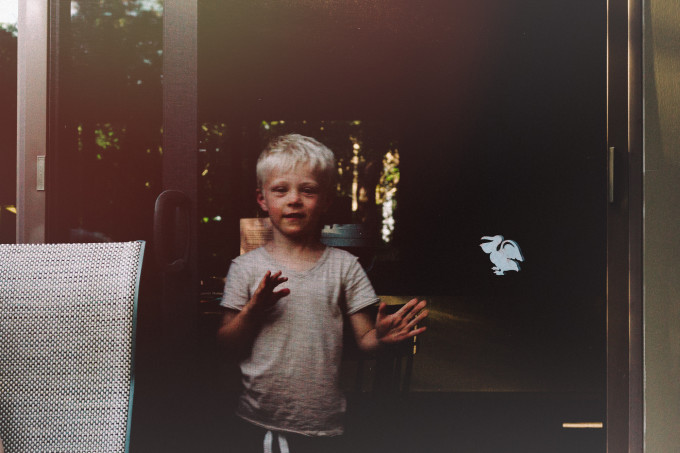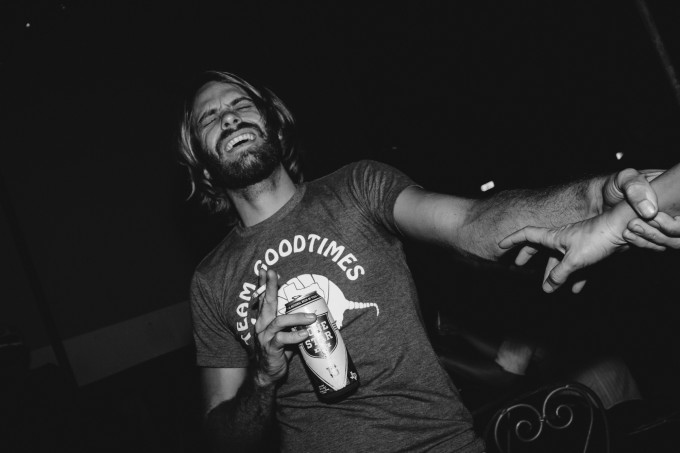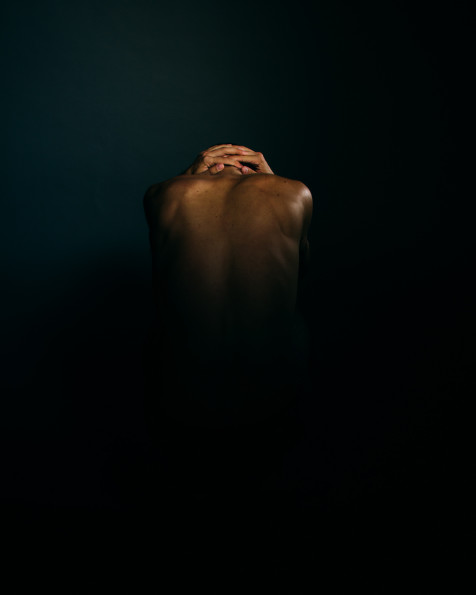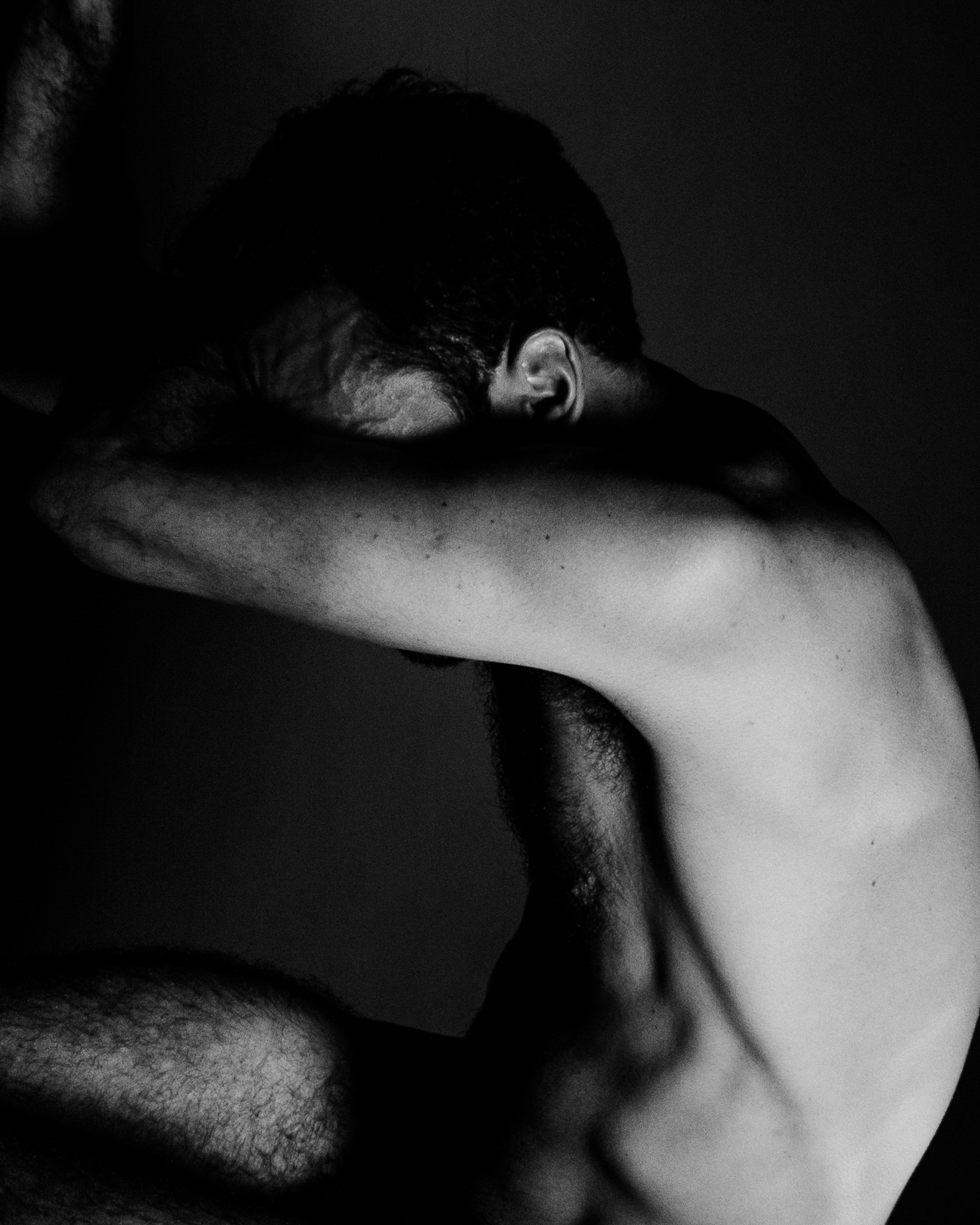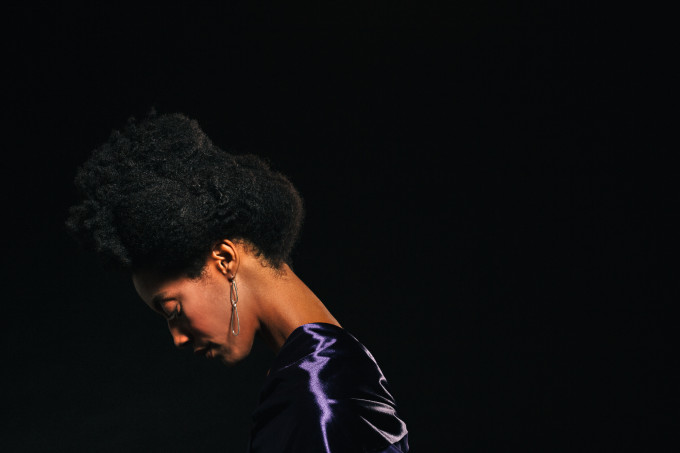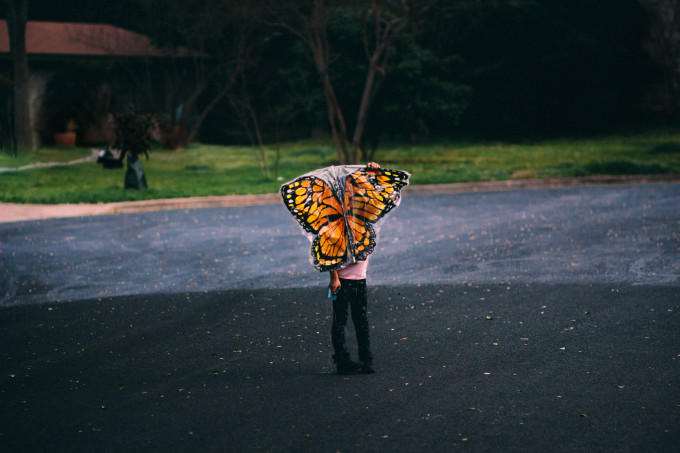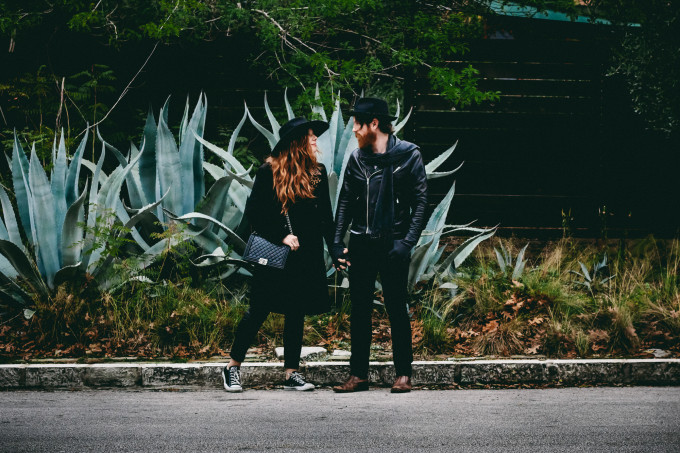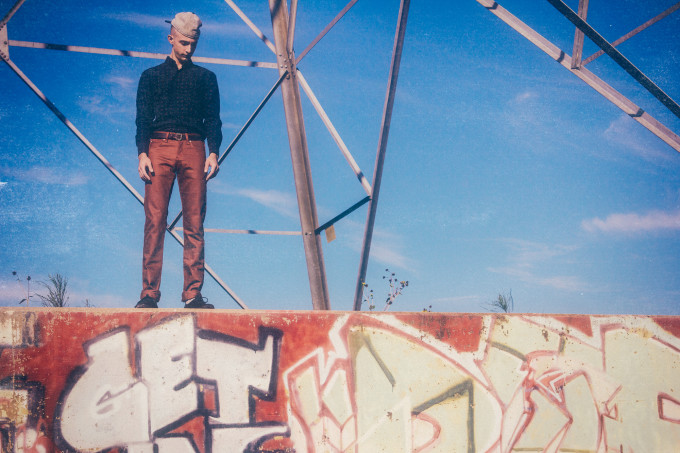All images by Michael Hernandez. Used with permission.
“On my 15th birthday, my mother gave me her Minolta X-370 that she purchased in 1982. She told me she bought it when I was born, but stopped using it around ’88.” says photographer Michael Hernandez about how he got into photography. Combine this with the fact that Mike grew up in a dysfunctional family, and you’ve got a formula for a person to find any reason not to be home.
Mike is now 33, and inherited his grandfather’s old Polaroid cameras, 8mm cameras, and a Canon AE-1. Throw his daughter into the picture and you’ve got yet another reason for Mike to want to shoot.
Mike is an interesting photographer: he has solid commercial work, and despite it being top notch he just can’t seem to play the Instagram game too well–but he kills it on EyeEm.
And for Mike, portraiture these days is something highly personal.
Phoblographer: Talk to us about how you got into photography.
Michael: That’s a long story. But the gist is:
- I graduated high school at the age of 16 and I had no clue what I wanted to study in college. I enrolled in random electives to see if I could find myself. And B&W Photography was one of the courses I chose to take. (This was before digital was prominent.) I used my mom’s Minolta X-370 for the course.
- I lost myself in the darkroom. And it became my favorite place to be. I had access to it 24/7-and I sometimes slept there.
Phoblographer: What made you get into portraiture?
Michael: I got my feet wet while hanging around/living in the Occupy Wall Street encampment. I arrived with the X-370 & an AE-1. I considered myself a street photographer then.
After a week, I noticed I wasn’t getting anything new so I put the camera down and actually made some friends. From there, after a few conversations with a fellow Occupier, I’d ask if I could make his portrait. And I tried to go on from there.
But when I came home, I crawled back into my introverted cave. I realized early on that portraiture wasn’t about making an image, it was about making a connection with my subject. And, back then, I had the emotional intelligence of a teenager—I wasn’t a conversationalist, nor did I really have a desire to get to know strangers. I only made portraits of those closest to me—mostly of my daughter since she and I were pretty tight.
It was about 2 years ago when I turned to portraiture again. I was going through a rebirth and was at a point in my life where I was dissecting myself, my past, and doing my best to put myself in uncomfortable situations. Portraiture seemed perfect.
With the help my girlfriend and our close friends (and their referrals) I became confident enough to market myself as a portrait photographer (among many other things.)
But I wouldn’t call myself a portrait photographer anymore. With photography, I’m just documenting moments, mostly—like any other photographer. (I also work with audio, video, and fine art mediums.)
I no longer take on new commercial work though. Lately, I’ve been building collaborative relationships with select artists/models and concentrating more on art direction. I now work with select individuals…
Phoblographer: What do you feel influences you creatively? A lot of it looks like a fine art influence.
Michael: That’s a loaded question for me.
You’re right, art is a huge influence. But there’s so much more!
I love the ephemeral reactions that are sandwiched between the familiar and unfamiliar.
And there’s also my daughter. Watching and photographing her throughout her childhood is probably the most fun AND my biggest influence. There’s nothing more intriguing than a child exploring an unfamiliar experience.
She’s a constant reminder to not be such an adult sometimes!
Usually, an image concept doesn’t even start with an idea. It starts with me journaling. I’m not one to journal daily, but it is usually how I initially process emotions. The image isn’t contrived prior to shooting, it sort of creates itself and I’m just pointing to it, I guess.
While processing, I also try paint, draw, and collage as much as I can—figure studies have way of developing their own stories.
I approach imagery as “solving a problem” and in other mediums, I’m very emotionally-driven and I work recklessly, without restraint. It’s gets messy, both physically and emotionally. And photography usually is the product or an amalgamation of all those processes.
My girlfriend is major contributor to my process as well. She’s my best friend. And she knows how to pull out things inside me that I can’t. She’s definitely someone I turn to for creative input/collaboration.
And, I think being an introvert has a lot to do with my creativity.
I’ve found my photographic compositions tend to perpetuate solitude— they come from a perspective of a certain isolation—as a voyeur peering through a secret window, watching someone inside a moment—which, essentially, is what I’m doing on a base level.
Lacking in refined (or even mid-level) social skills is a huge frustration and sometimes it’s a debilitating feeling.
Photography is an easier way for me to tell people where I am emotionally.
Phoblographer: Talk to us about the gear that you use.
Michael: You know, my natural tendency is to really geek out to gear. (I’m also an audio/recording engineer and gear-speak is pretty much my language.)
But, as a photographer—not so much. Er, not anymore anyway.
As the years have progressed, I’ve dropped more and more gear from my pack. These days, I just bring a camera, light meter, a lens, and a speedlite or two to a shoot.
I’m not loyal to any brand as I think I was late to the game in digital photography. I bought a used Canon 60D in 2010 (ish) on my way to my first serious-cash gig in NYC. I met a guy in Austin right before my flight, gave him cash from the advance I asked for and fiddled around with the camera while on the plane. Until then, I was shooting 35mm, 120, and pack-film. So, the only reason why I have Canon gear is because that guy from Craigslist was the fastest to respond to my inquiry.
I spent years learning and experimenting with flash photography and now that I have it down, I usually only use one speedlite, if at all, triggered with some knock-off transceivers while in the field. In the studio, I have just about everything you can think of, but still, 9 times out of 10—I’m using a single flash unit with a modifier or a bounce.
My favorite modifier right now is a cheap-o umbrella/soft-box unit that I randomly came across on Amazon and purchased impulsively. The quality of the light it gives is so soft and big! It’s surprising! —I think Annie Leibovitz uses a similar set up—but I don’t quote me on that— it IS possible I might have said that to my girlfriend (and myself) to justify the impulsive purchase.
In any case, I don’t care to get caught up on gear specifics. I feel one doesn’t NEED the top gear to get top results. As a matter of fact, I know plenty of Austin photographers with some super Pro gear—and it’s fun to play with—but meh—at the end of the day, I don’t give a shit, nor do I really need it to get what I want. The photogs that NEED specific gear, I’ve learned, are the most lazy and un-creative people I know…But ironically, are the most financially successful photogs I know… Go figure…?
I still shoot on that 60D, despite chuckles, cringes, and teasing from peers. I don’t care that I can’t push it past 1600 without serious noise. Like film, I’ve grown to like the quirks that come with its limitations. I’ve seen the dynamic range of the units that Nikon and Sony are pushing out—it’s pretty incredible! But I can’t justify upgrading because I prefer limitations.
“The photogs that NEED specific gear, I’ve learned, are the most lazy and un-creative people I know…But ironically, are the most financially successful photogs I know…”
I’m a firm believer that limitations promote creativity. And to be completely honest, I think it’s weird that images coming from these new units are so damn crisp and hyper-real. I don’t want any part of that look. My philosophy is old school I guess—I think a photographic image should have a certain magic about it—like a 3rd wall to generate a separation from reality. Part of the magic that drew me into photography is that it was mysterious; it was representational. It left an opening for imagination to be part of the viewing experience as well.
I sound like a geezer—but it’s different with these new cameras. Images aren’t representational of a moment or a memory anymore—they’re sort of replacing them because the cameras are so damn advanced. There’s almost zero margin of error now. In a sense, I feel these units sort of replace the human element that goes into making an image.
My rickety 60D is my workhorse. I can hear some photog nerds out there gasping, “What? 60D?! For client gigs?!@?”
Yep. Because I don’t need anything else to pull off a shoot.
I’d rather buy film than some fancy idiot-proof DSLR anyway. When not shooting digital, I typically shoot on a Polaroid 600SE, Mamiya RB67, Yashica Electro 35 GSN, AE-1, and of course, my Minolta X-370.
I my eyes—I don’t need a fancy digital camera that can compensate for shitty lighting skills—I just need something that works and can shoot RAW.
Phoblographer: Portraiture and the whole process involved is a conversation between people to get the photos that need to be created. So what typically goes through your mind as you go into a shoot?
Michael: I try not to think too much during a shoot because I’m an over-thinker. And it ruins the fun. Like I said earlier, emotion drives my creativity much of the time so most of what I do in a session is spontaneous and reactionary to what’s happening or who I’m with.
Before I even schedule a shoot, I sit with possible clients or creative partners and feel them out over drinks or food—sort of like a date. It’s here when we establish the goal—and it’s when I explain that I’ll give them what they want IF they’re willing to step outside their comfort zone to give me what I need. I don’t beat around the bush and I don’t sweet talk the process—there’s always a disclaimer stating that things could get weird.
Lately, because I no longer market myself as a “photographer-for-hire”, I have the luxury of choosing who I work with. And I almost ALWAYS choose people who are open to experimenting. But even when I was taking on business portrait work, I had the same prerequisites.
I think most subjects approach a portrait session as a major event of some sort. Unless it’s a wedding or funeral, I don’t think it should be. Instead, I keep the camera packed away and do my best to steer my subject away from that mentality by flipping the roles a bit.
I’m an INFJ—which means I’m inside my head. A lot! Small talk, for me, is excruciating. It drains me. I hate it. And conducting a shoot around conversation only worked for me part of the time. I was always more awkward than my subject, so I don’t rely on it to get what I want anymore.
I still talk to my subjects, but I’m usually just bullshitting with them—I almost ALWAYS say too much about myself in a way that reveals how neurotic I am—you know…just like I would in any situation in “real life.”
I think doing this changes the power dynamic into an atmosphere that breeds a genuine partnership. —Partly because I force them to. Generally, I’ve found that if I act with no reservation whatsoever, their focus changes and I get more honesty from them. I mean, who wants to be a stone wall to someone who is spilling their guts to you as if you’ve known each other since childhood? They stop treating the session as a stuffy photo session and it eventually becomes a therapy session.
I somehow get away with it.
But yeah, part of making a portrait is a conversation. But I treat the conversation element as just that—a simple conversation, with hints of desperation and an apathy for any ideal of a “professional photography session.”
It wouldn’t surprise me if my commercial clients think I have Asperger Syndrome.
Come to think of it, I wouldn’t be surprised if I was diagnosed with it.
Phoblographer: What’s the biggest thing that you feel you’ve learned as a photographer in the past year?
Michael: 2015 gave way to a paradigm shift in my approach to photography. I learned that I’d never be happy as a service-driven photographer. And I also came to understand that I’m not a photographer. Sometimes photography just doesn’t satisfy my creative needs and I learned that it’s okay to step away from it.
I went through a lot of frustration trying to find a balance between work-for-pay and work-for-play. And my struggle to satisfy both value systems came out in my photos at times; ultimately, with the help of my girlfriend, I realized that I value the freedom to make art more than I value monetary success.
Solitude and/or detachment are probably my most re-occurring themes in my imagery, I’ve noticed. Despite my conversation style, my subjects are usually interacting with their environments alone. I learned that I compose from a place of lonesomeness and I use my subject (or client) as a mode to convey my own feelings, which makes me selfish, I guess. But during the past year, I’ve learned that my job (when I’m a photographer) isn’t to make a pretty picture.—It’s to create a temporary intimate relationship with my subjects and guide them through the process of bringing down their walls. If I just do that, I don’t have to waste time executing some contrived story as a motivation to create an image—it’ll come organically.
Phoblographer: On Instagram, you don’t have the largest following but on EyeEm it’s much different. What do you feel are some of the biggest differences in the communities?
Michael: A difference of 22k followers is pretty crazy. I can only speculate and offer my opinions—
For me, Instagram is a guilty pleasure while EyeEm is where I go to find some quality content. I enjoy using both apps but I absolutely view each differently.
“I my eyes—I don’t need a fancy digital camera that can compensate for shitty lighting skills—I just need something that works and can shoot RAW.”
Short answer: At the end of the day, I think the EyeEm community goes to an art opening to support an artist and his/her work.
The Instagram community just goes to an art show so they can be seen at an art show…or to try to sell you some shit from their store.
I think Instagram is catered to the conventional. Remember in the beginning? It offered awful filters and was just clunky in general, it was just an alternative way to communicate. Not a single innovative update since it’s inception. And when grandma adopts it—wait—when corny businesses like Wal-Mart advertise on it, the app is reduced to just being a market research tool. I think Instagram is for Instagramers, not photographers. And I treat it as such. Sure, I put my images on it…but, to be honest, I’ve been using it to test-drive projects and as a source of base-level entertainment. Also, I can be a shut-in sometimes—so I use it to announce that I’m still alive.
I equate Instagram to a suburb—it serves a purpose, but the environment is mostly cookie-cutter and isn’t an atmosphere that will produce (or introduce) anything culturally important. (Not that I ever expected it to, but I hoped to be inspired by some content.) On the other hand it IS a great place to:
- advertise something produced outside of the app itself.
- look at censored nudes disguised as “art.”
- I’ve found a handful of great painters on it. But 95% of Instagram content is trivial or an advertisement—I can’t imagine myself using as a tool anymore.
EyeEm’s model seems like it’s solely to showcase, feature, and support photography. I think it came out BEFORE Instagram, right? And it was (and still is) a far more superior image editor than Instagram. I think they have a more forgiving image compression algorithm too, but I could be biased.
Through EyeEm, I’ve been published, shown in galleries AND I made some cash by selling rights to my images. They team-up with photographer-friendly businesses to help generate quality content for its users! I think biggest difference between the two apps, aside from the amount of users, is innovation. EyeEm far more innovative and offers incentives to use the app. Instagram is just more popular….And that’s pretty much it…—kind of like that popular hot girl in high school…all hype, no substance.
“But when I came home, I crawled back into my introverted cave. I realized early on that portraiture wasn’t about making an image, it was about making a connection with my subject.”
I read about how there’s a lot of potential value for photographers on Instagram—I hear stories about how Instagram launched the careers of some photographers (some of which I’m a fan) but I can’t value it just because of a couple “needle in they haystack” situations. But then again, I don’t value social media in general, well the current models anyway.
Instagram is pretty pedestrian if you think about it. And I’m not one to waste a lot of energy with convention—But I will admit I tried to take it seriously at one point, until I found EyeEm.
I’ve made some great friends via Instagram. And sure, I’ve received some business thru it. But, except for a handful of instances, none of that business was valuable to me in the long run. Because of its popularity, I primarily use Instagram as a search tool for meeting collaborative partners, entertainment…And for internet stalking.
But maybe take all that with a grain of salt…I’m the lame guy that rants about how big business ruined my beloved internet and hasn’t updated his website in ages.


